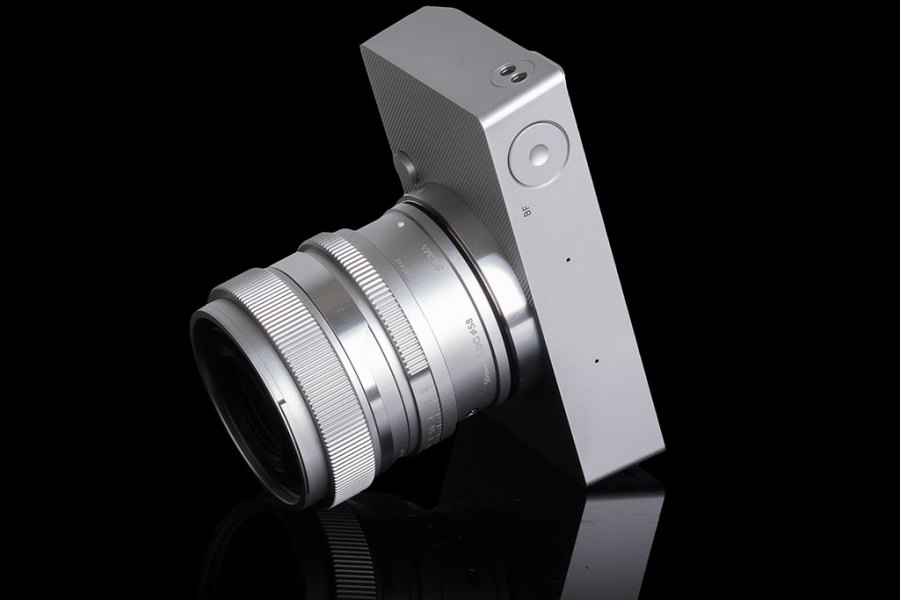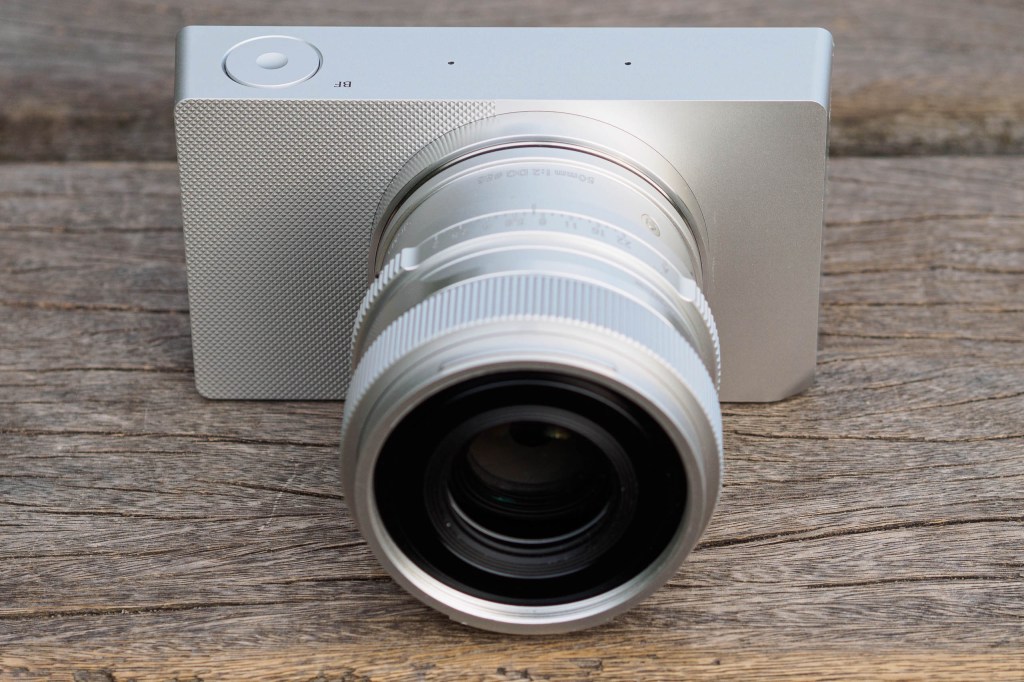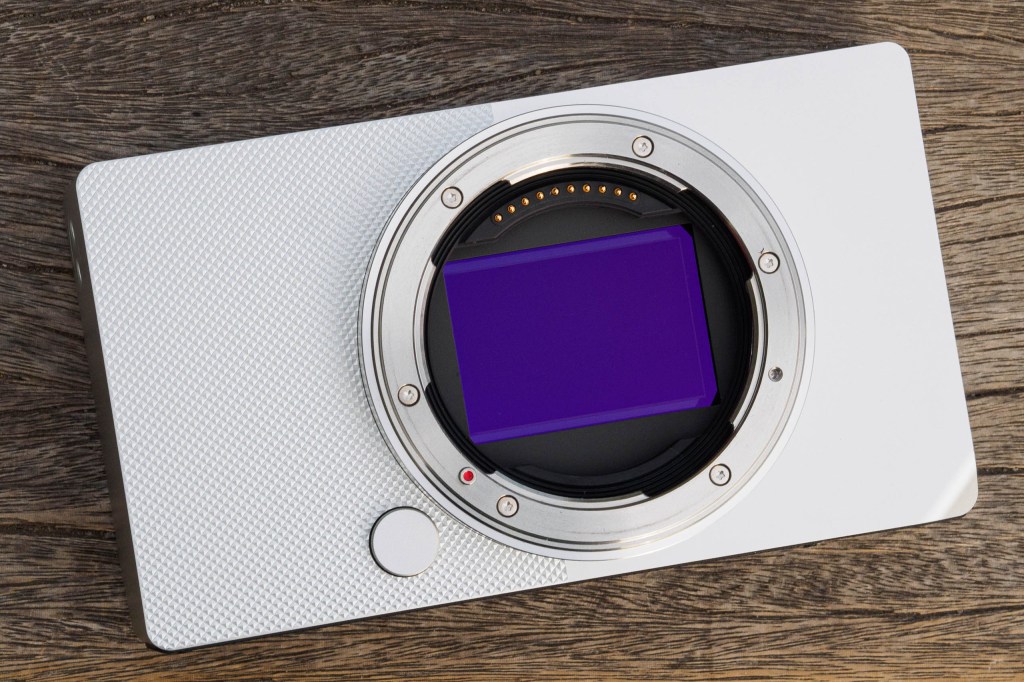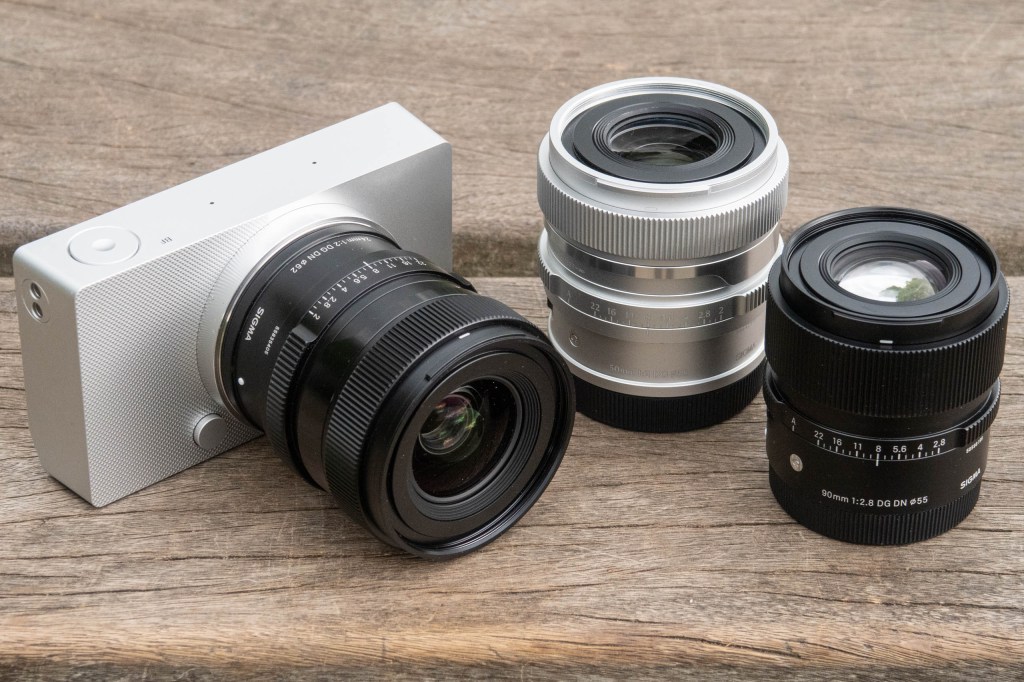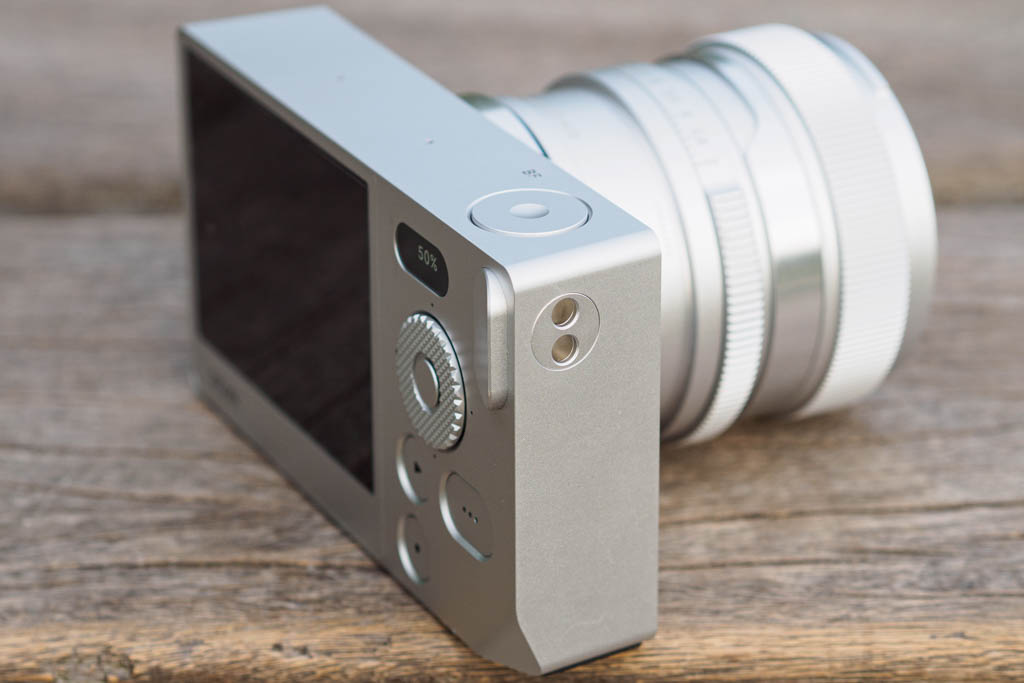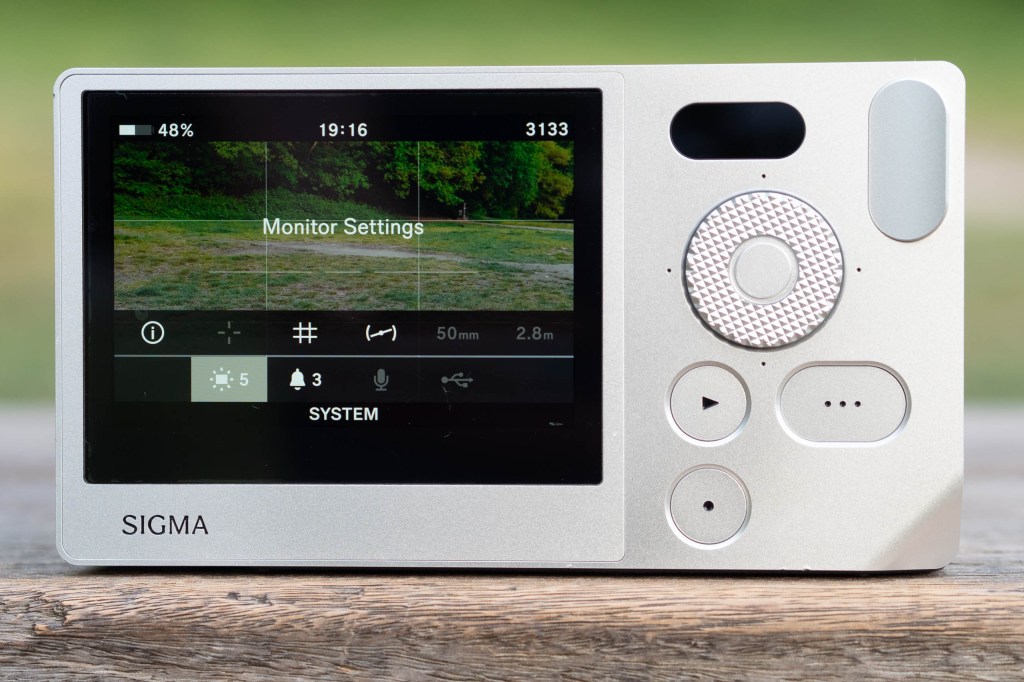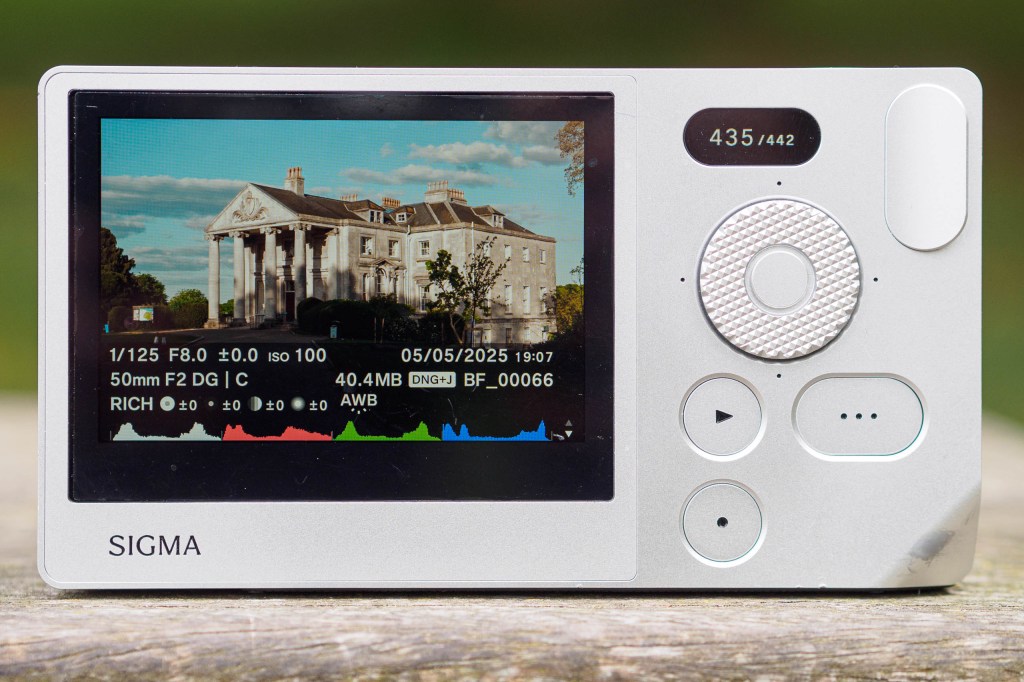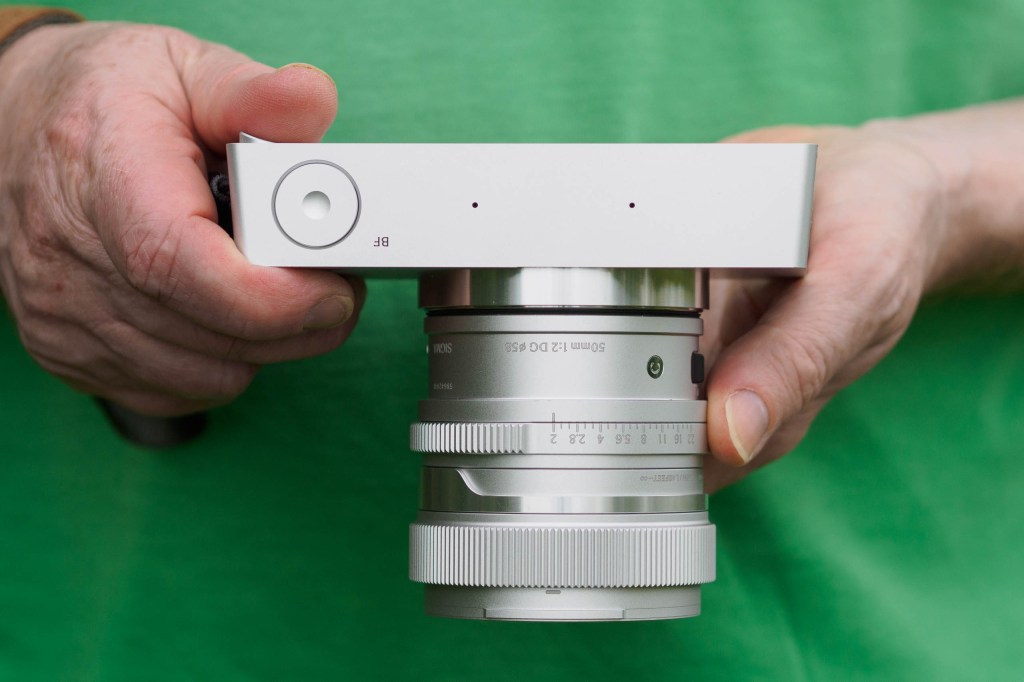Amateur Photographer verdict
The Sigma BF is a beautifully designed and built camera with a beguiling simplicity of operation. If you’re looking for an antidote to over-complicated DSLR-shaped models, it might just be for you.- Uniquely stylish design
- Super-simple operation
- Small and light by full-frame standards
- Useful USB mass storage connectivity
- Fixed screen and no viewfinder
- No image stabilisation
- Mediocre battery life
- Questionably implemented Auto ISO
Take just one look at the Sigma BF, and it’s clear that this is a camera unlike anything else around. With its minimalist body that’s crafted from a single block of aluminium, it’s almost as much an object of art as it is a tool for creating photographs. It looks especially striking in its natural silver finish; an all-black version is also available, but to me it rather misses the point.
Sigma BF at a glance:
- $1999 / £1969 body-only
- 24MP full-frame sensor
- ISO 100-102,400 (standard)
- Up to 8fps continuous shooting
- 6K 30p, 4K 30p, Full HD 120p video
- 3.15in, 2.8m dot fixed touchscreen
At $1999 / £1969 body-only, the BF looks expensive for what is a pretty basic 24MP full-frame mirrorless camera, especially in a world where you can buy the extremely well-featured and accomplished Nikon Z5II for essentially the same price, complete with a kit zoom lens. But, of course, it’s not really trying to be the same thing. Instead of being an all-rounder that can tackle any kind of subject, it’s a small, simple-to-use camera for everyday photography.
To this end, Sigma has entirely a re-thought the user interface, with the aim of doing away with film-era concepts and over-complicated menus. As a result, the BF has the bare minimum of buttons on the back and just a single dial, while viewing is solely via a fixed LCD screen. It’s about as far away from conventional SLR-like designs as you can get.
Since the BF’s launch, Sigma CEO Kazuto Yamaki has talked about the Japanese concept of ‘Beautiful Foolishness’ as the inspiration for the camera, and indeed its name. The idea is that there should be space in life for things that, perhaps irrationally, don’t pin all their value purely on their utility. The Sigma BF certainly lives up to this aspiration, but how well does it work as a camera, and crucially, should you buy it?
Features
In terms of its photographic features, the Sigma BF is distinctly uncomplicated. It employs a 24MP full-frame backside-illuminated sensor, which offers a standard sensitivity range of ISO 100-102,400. Extended settings down to ISO 6 are also available, produced by adding together multiple ISO 100 exposures. Shutter speeds range from 30 seconds to 1/25,600sec, while continuous shooting maxes out at 8fps, which is fairly pedestrian by today’s standards.
Autofocus is a real step up over the older 24MP Sigma fp, thanks to the addition of on-sensor phase detection. The BF includes a limited level of subject recognition too, covering humans and animals. In the default auto-area AF mode, if you tap a subject on the screen, then the autofocus will keep track of its position, if it moves or you recompose the shot.
Creative in-camera colour modes are all the rage at the moment, and Sigma has included a broad range of options. Most of these are distinctly stylised and make no attempt at colour accuracy, instead aiming for distinct looks such as ‘Power Blue’ or ‘Teal and Orange’. Unlike the firm’s previous cameras, the BF includes in-camera raw conversion for tweaking your images before sharing them.
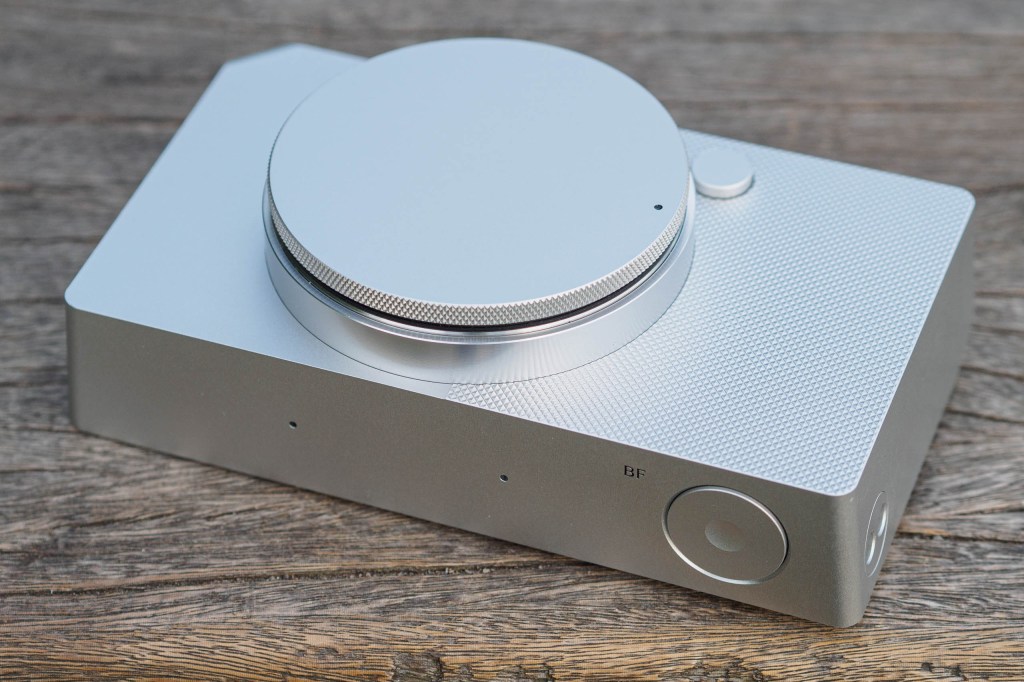
While Sigma is clear that it sees the BF as primarily being for still photography, the camera has a reasonable video spec too. It can record in 6K or 4K at up to 30fps, or Full HD at up to 120fps. But you don’t get microphone or headphone sockets, or an HDMI output port. In fact, the only connector is a single USB-C port for battery charging and data transfer.
And that, essentially, is it. In a way, it’s more instructive to list all the features you don’t get. There’s no viewfinder, and the screen doesn’t tilt. You don’t get a mechanical shutter, with the camera relying purely on an electronic shutter. There’s no in-body image stabilisation, either, and only a few L-mount lenses have optical stabilisation.
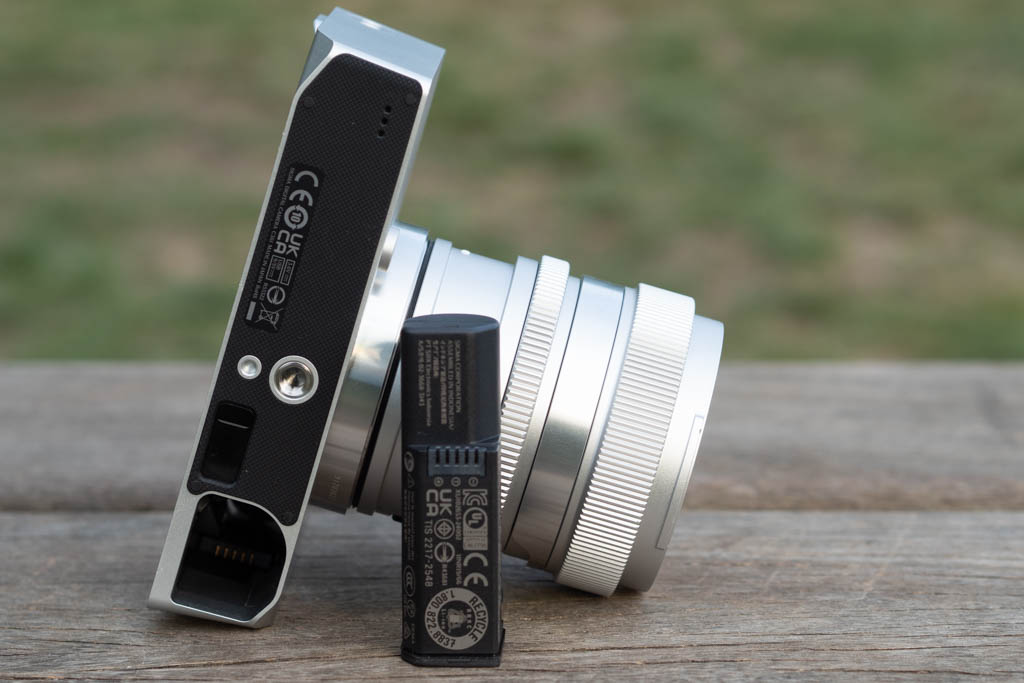
That’s not all. The camera has neither a built-in flash, nor a hot shoe for using an external unit. You don’t get built-in Bluetooth or Wi-Fi for connecting the camera to your phone. There’s not even a memory card slot; instead, the camera has 230GB of built-in memory, that Sigma says will hold 4300 raw files or 2.5 hours of video. This is simplicity taken to its logical extreme.
Lenses
Sigma has built the BF using Leica’s L mount, which is also used by Panasonic for its full-frame cameras. While you can fit any L-mount lens, the BF is specifically designed to be used with Sigma’s I-series primes. These employ beautifully machined metal barrels that match the camera perfectly, along with nicely tactile aperture rings. The L-mount versions now come in silver as well as black, to match the silver BF.
The I-series lenses are split into two subtly different groups. Firstly, there’s a set of f/2 optics, with focal lengths of 20mm, 24mm, 35mm, 50mm and 65mm. Then there are more compact lenses with smaller apertures: namely 17mm f/4, 24mm f/3.5, 45mm f/2.8, and 90mm f/2.8.
I’ve now used most of them and they’re really nice lenses. I have a real soft spot for the latter two in particular.
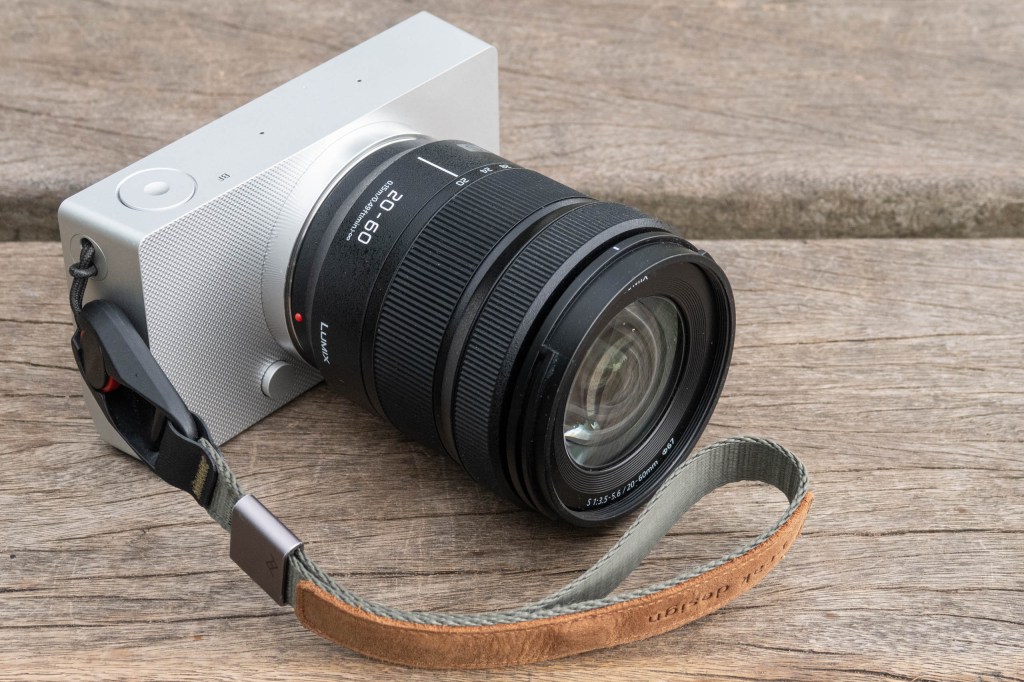
During this review, I mostly used the BF with the 24mm, 35mm and 50mm F2 lenses. But I also spent some time shooting it with the Panasonic Lumix S 20-60mm F3.5-5.6. This is one of the smaller L-mount zooms around, and it worked absolutely fine. But I don’t think I’d want to use anything much larger.
Connectivity
One unusual aspect of the BF’s design is that the only way to get your photos off the camera’s built-in memory is to physically wire it to another device via its USB-C port. Then it will show up as a removable drive, with your photos organised into folders by date. The most obvious approach is to connect it your computer and copy your photos across. However, that’s not the only option.
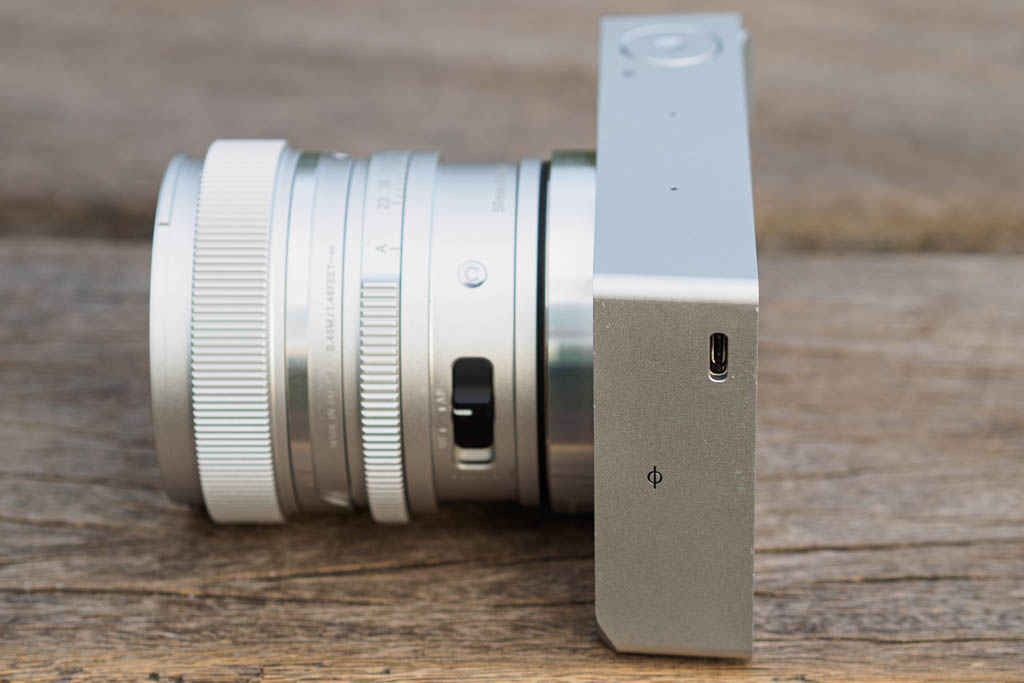
Unusually, you can also wire the camera to a smartphone that can recognise a USB Mass Storage Device (either an Android device, or a USB-C-equipped iPhone). Again, it’ll show up as an external drive in the Files app. Then you can browse your photos and send DNG raw files to Lightroom for editing. This turns out to be a remarkably straightforward way of processing and sharing your favourite shots.
That’s not all. You can plug a memory stick or SSD directly into the side of the camera, and then copy your photos across to it. Unfortunately, though, images have to be selected on a one-by-one basis, although once that’s done, you can transfer multiple files at a time. I’d love to see a means of backing up all my photos to an external drive in one go, with incremental backups each time I subsequently connected the same storage device.
Sigma BF: Key features
- Power: The BP-81 battery is custom-designed for the BF, slotting directly into the baseplate. It’s rated for 260 frames or 60 minutes of video
- Connectors: There’s just a single external connection, an exposed USB-C port on the side for battery charging and data transfer
- Storage: There’s no memory card slot, with 230GB of internal memory that’s capable of storing 4300 raw files or 2.5 hours of video
- Status screen: A small screen on the back shows whichever setting you’re currently controlling, and battery charge as a percentage when the camera is in standby
- L-mount: While a good range of lenses is available from Sigma, Panasonic and Leica, the BF is designed to be used with Sigma’s I-series optics.
- Haptic feedback: Only the power button actually clicks. The others rely on haptic feedback to give the impression of being pressed in.
Build and Handling
Externally, the Sigma BF has a very simple design. From the front, it looks like a plain rectangular box, with a textured fingergrip to one side of the lens mount. There’s just the shutter button on top, a single strap loop on one side, and USB-C port on the other. The battery slots directly into the base, with no separate door.
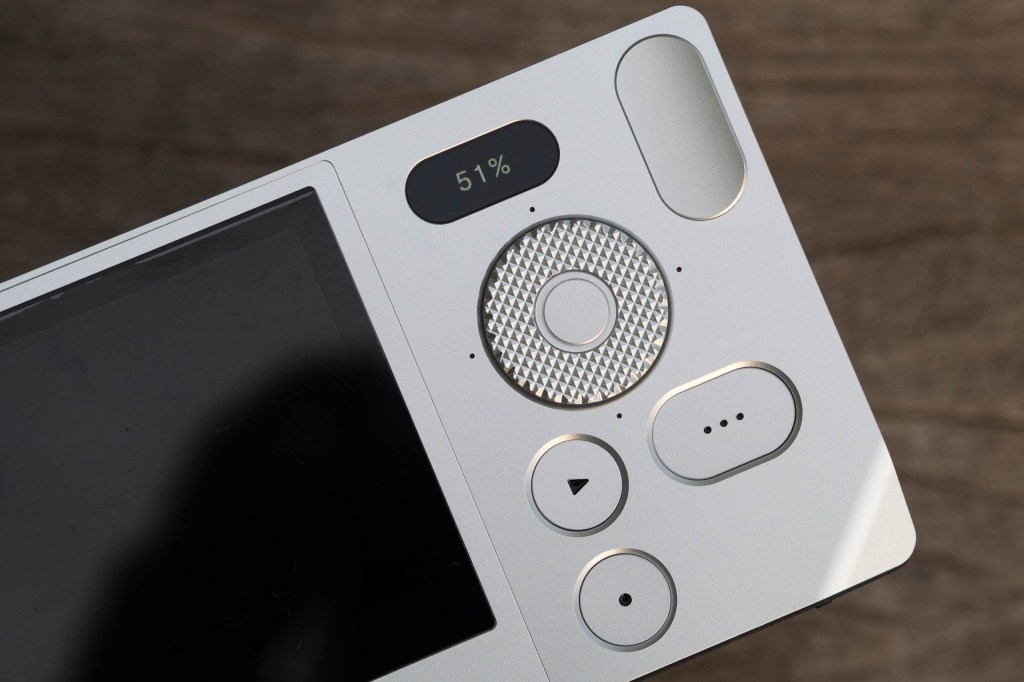
All the controls are on the back, and they’re very simple too – just four buttons and a single d-pad/dial, all placed under the control of your right thumb. Uniquely, only the power button physically clicks, with the others relying on haptic feedback to give the same impression. A small status screen shows whatever setting you’re changing, with the idea being that you can leave the main LCD display clear of any overlay and concentrate purely on composition.
Size-wise, the Sigma BF is small but not tiny, measuring 130.1 x 72.8 x 36.8mm and weighing 446g. That’s similar to other compact full-frame models such as the Sony A7C II and Panasonic S9, in terms of frontal dimensions. But it’s rather slimmer and lighter.
In your hand, the camera feels great and comes across as a premium product. Its one-piece aluminium body is beautifully finished and feels extremely sturdy. Look closer and there are lots of neat design touches, including rounded corners at the bottom on the front left and back right, so they won’t dig into your hand. I know some people dislike the sharp edge at the bottom of the camera, but I never found it to be a problem.
In fact, I found the BF surprisingly secure to hold, thanks to the textured finger grip and a small thumbhook on the back. I was quite happy carrying it around in my right hand, with just a wrist strap for security. That strap loop, by the way, is perfectly sized to accept a Peak Design anchor for the Cuff wrist strap, which I doubt is any coincidence.
As Sigma promised, the user interface is entirely refreshed, and indeed rather unusual. Don’t necessarily expect to be able to pick up the BF and shoot with it in exactly the same fashion as your current camera. Instead, you’ll first want to spend a little time familiarising yourself with how everything works.
Most obviously, the camera does away with the concept of conventional PASM modes. Instead, you tell it which of shutter speed, aperture, and ISO you want to take control of, and which you’ll leave on Auto. Then to select and change a setting, you use the combined d-pad/rear dial, or the aperture ring on the lens. In a particularly neat touch, when you half-press the shutter button, the dial switches to controlling exposure compensation as the final step before shooting.
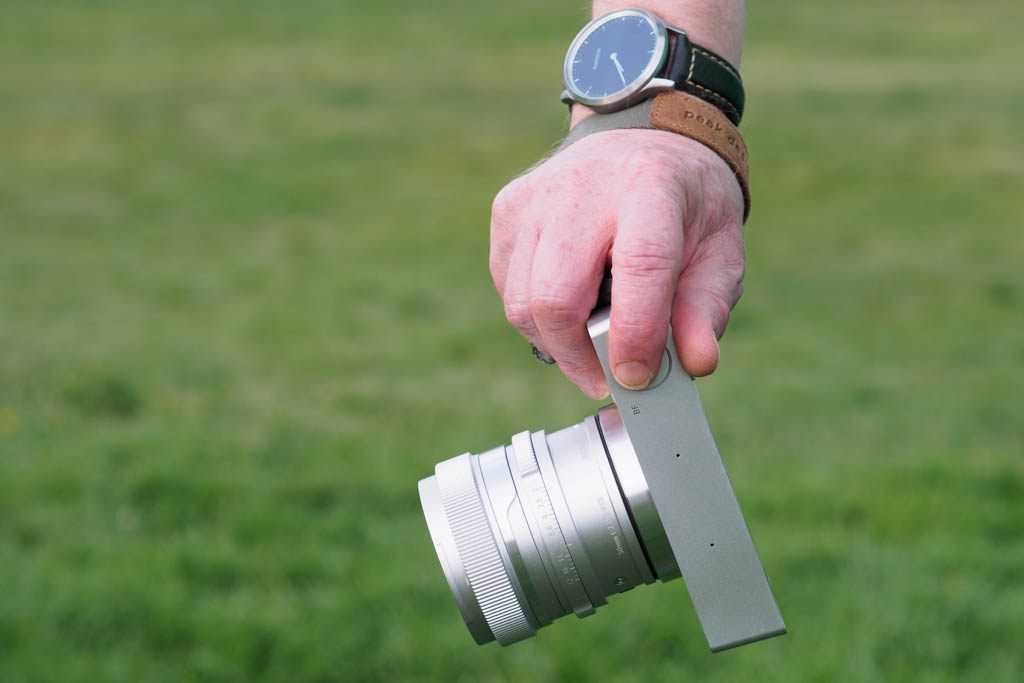
This approach isn’t entirely unique – it’s broadly similar to Canon’s Flexible Program mode on its EOS R models. It’s also very similar to how many Fujifilm cameras work, such as the X100VI and X-T5. The difference is the way Sigma has implemented it using a single, and very simple control. I think it makes perfect sense as a means of operating a camera – PASM modes are a hangover from shooting film.
In total, you get quick access to ten ‘top level’ options. Alongside the main exposure settings, these are colour mode, drive mode, file type, aspect ratio, focus mode, and white balance. Sub-settings are then placed together on a single screen; with autofocus, for example, this includes subject detection, focus area, peaking, and a neat ‘AF-S Auto Review’ option that’ll zoom in and show exactly what the camera has focused on.
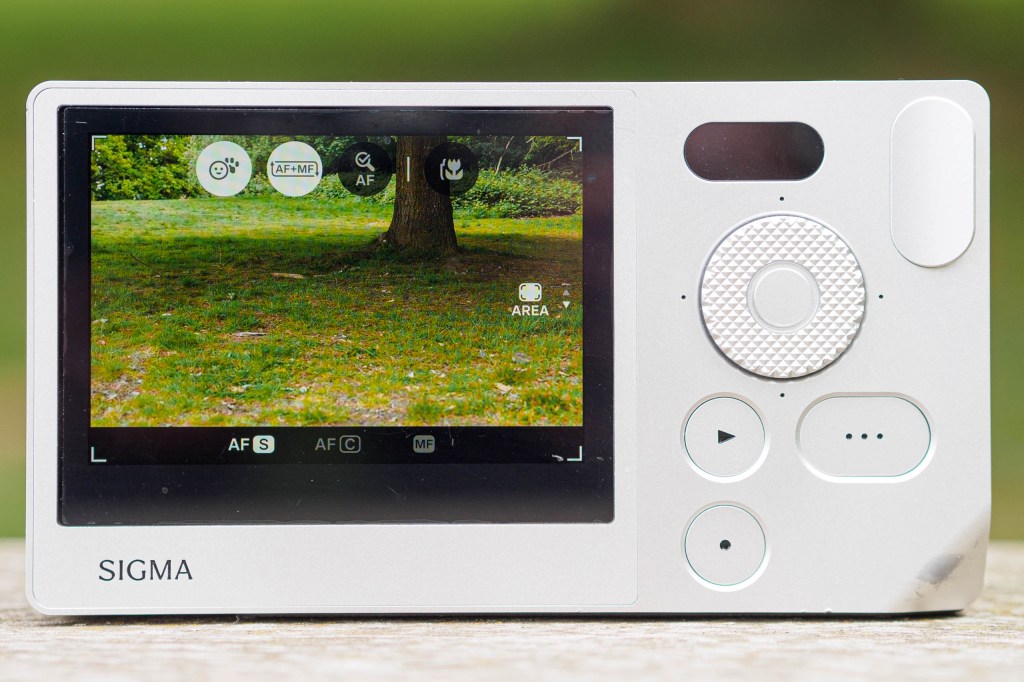
Press the Menu button, and initially you get an onscreen quick menu for selecting information displays, screen brightness, and speaker/microphone volume. Beyond that, the System menu is strikingly simple and straightforward, with just ten top-level menu items that you’ll rarely, if ever, need to change. Overall, the interface is mostly very logical and well-organised.
I do think some things could be improved, though. Most obviously, there’s no simple at-a-glance indication of which exposure parameters you’re setting manually, and which the camera is controlling. This could be resolved simply by adding a small ‘A’ onscreen beside those under the camera’s control.
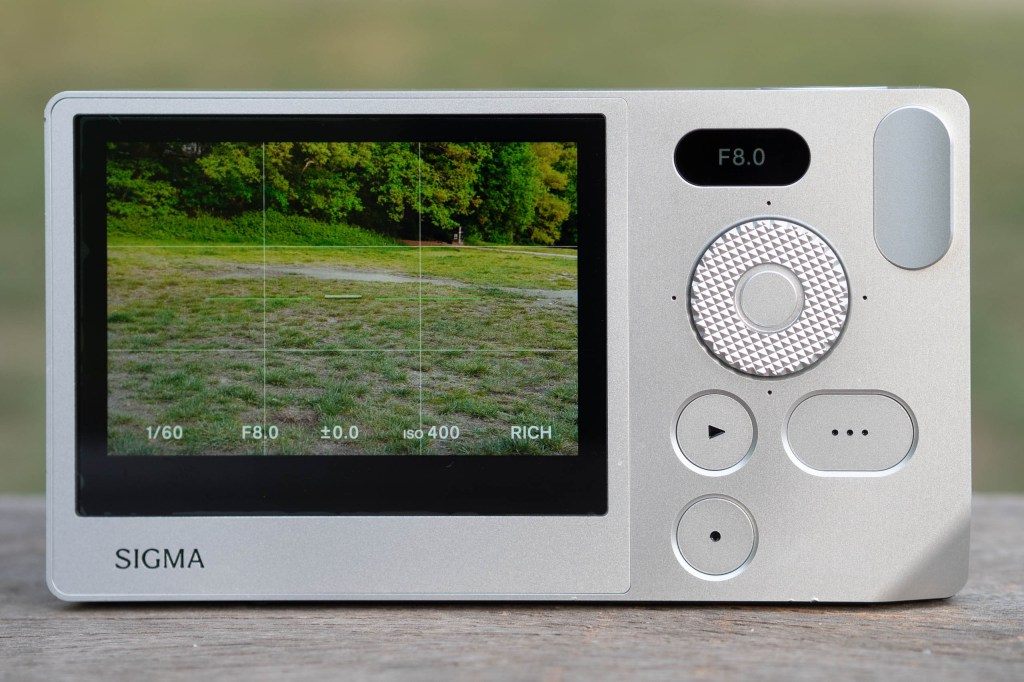
It’s also slightly awkward to switch between controlling the exposure settings automatically or manually, requiring three button presses each time. It would be nice if this could be toggled more simply, perhaps by pressing the button in the centre of the control dial for a second.
Likewise, with lenses that have aperture rings, I’d like to have the option of assigning the ‘A’ position to auto aperture control, like on Fujifilm cameras. Currently this passes control to the camera’s dial, in line with standard L-mount logic.
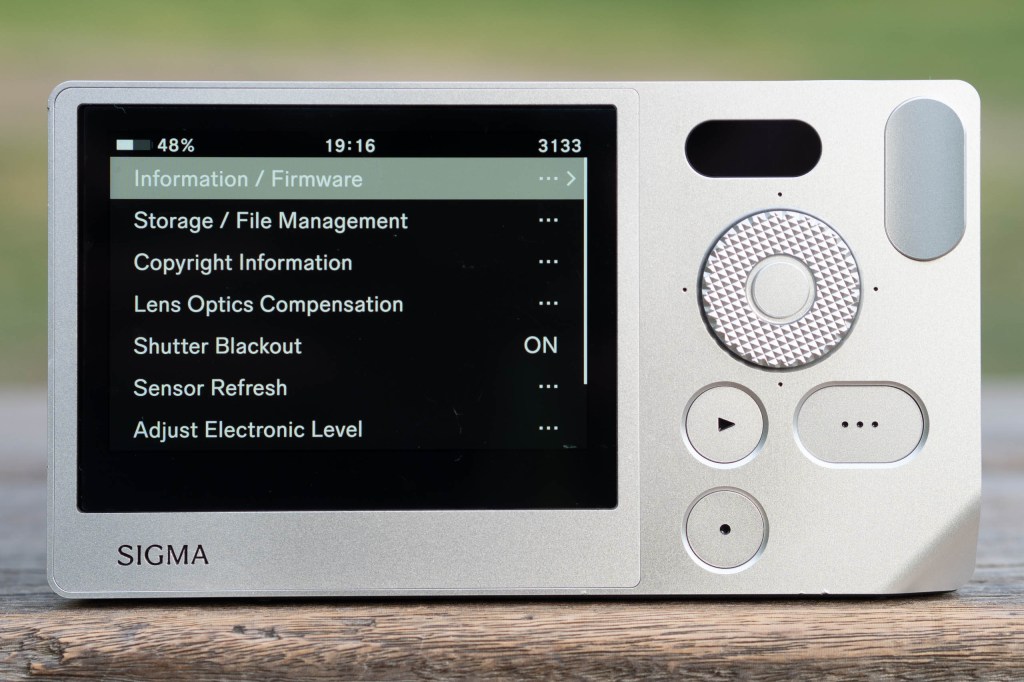
Even better, I’d like to be able to bias the shutter speed, aperture or ISO for an individual shot at any time I liked, regardless of whether that setting is currently on auto. The camera can always shift another setting to deliver the desired exposure.
LCD screen
If the Sigma BF has a serious weak point, it’s the reliance solely on a fixed LCD screen for composing your images. Quite simply, while it’s fine indoors or in cloudy conditions, it’s just too dim for shooting outside on a sunny day. The lack of any tilt mechanism also means that you’re forced to hold the camera up in front of you, rather than at waist-level, which would be more stable and discreet.
Thankfully the screen brightness adjustment setting is easy to get to, as you’ll probably want to turn it up to 5 whenever you go outdoors. But even then, too much of the time I found myself ‘composing’ my shots based on little more than guesswork and trust, and with little idea of precisely where the camera was aimed and focused. Overall, I really missed having a viewfinder.
When you can actually see the screen, though, it provides a good idea of how your shots are going to turn out. The camera previews depth-of-field, exposure, colour mode, and white balance. You can also choose to overlay exposure settings, gridlines, and an electronic level.
One oddity, though, is that you can’t have a live histogram active by default. You can persuade the camera to show one by selecting an exposure setting, but this isn’t very practical. When in doubt, it’s easier to check the nice RGB histogram that you can call up in playback.
Autofocus
When it comes to autofocus, I’d say the Sigma BF is probably as good as you’re likely to need it to be. After all, it’s never going to be a camera for shooting sports and action with long telephoto lenses. Instead it’s more likely going to be aimed at static subjects, or candid and semi-posed portraits. Switch on face detection, AF-C and wide-area mode, and it’ll deal with this just fine.

Because you don’t have a viewfinder, it can be difficult to judge whether the camera has focused precisely where you want, especially when shooting with f/2 primes wide open. This is where I found the AF-S Auto Review function can be useful, as it’ll zoom in on your selected focus area for a specified time. However, I wouldn’t want to keep it switched on all the time.
Enable full-time manual focus, and you can easily tweak focus when necessary, with the camera engaging magnified view and focus peaking whenever you turn the lens’s focus ring.
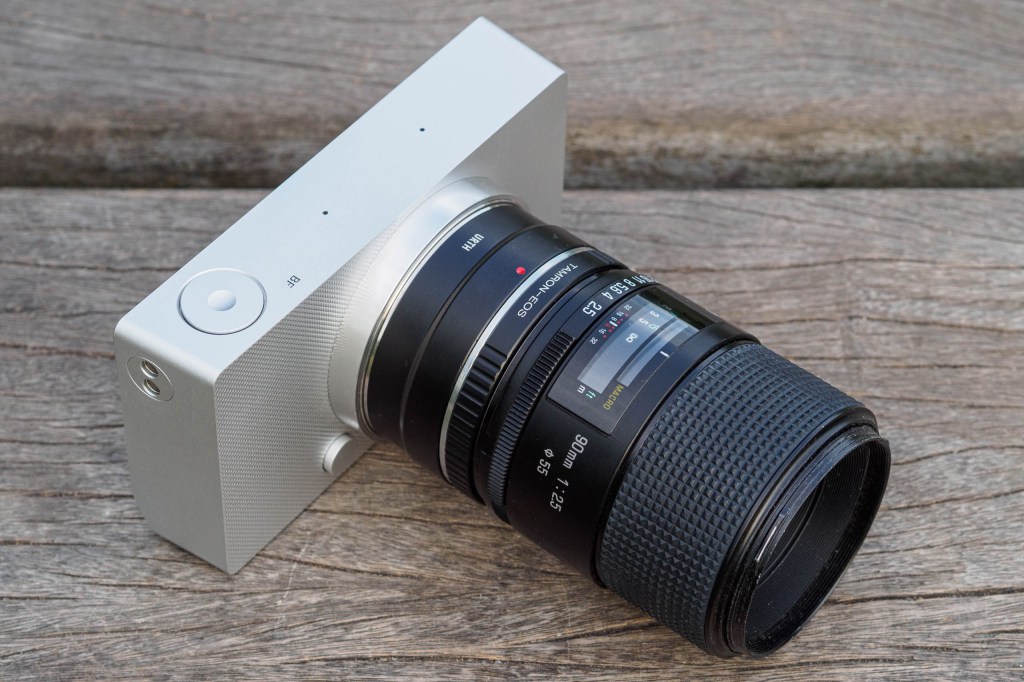
You might think the BF would also be a good vehicle work working with adapted manual-focus lens, but unfortunately, that’s not necessarily the case. The problem here is that focus magnification is poorly implemented with manual lenses. You can double-tap on your subject to bring up a magnified view, but then it disappears again much too quickly, before you have time to set and confirm focus.
Note: It seems that the double-tap magnification time is also governed by the AF-S Auto Review option, so if you set this to 5 seconds, you should have enough time for manual focus. Ideally, though, they’d be separate settings.
Performance
In general, the BF is pleasant and responsive in real-world use. It only takes a moment to power up, and if you turn off the various electronic operational sounds, it can be entirely silent in operation. That can be a bit disconcerting, though, as then there’s very little feedback when you take a picture – just a screen blackout during the exposure, which at most shutter speeds is so brief as to be practically unnoticeable.

Battery life is, unfortunately, really not great. In fact, shooting with the BF is a constant exercise in power management, and keeping an eye on the battery meter as it drops disconcertingly rapidly. You’ll soon learn to tap the on/off button after every shot to conserve juice. Thankfully, though, it’ll top up pretty quickly from any powerbank, and doesn’t demand a USB power delivery compliant (USB-C PD) supply.
Turning our attention to continuous shooting, here the Sigma BF performs better than you’re ever likely to need, especially given the camera’s design. In my tests, it can shoot at 8fps in raw+JPEG for about 260 frames, which equates to well over 30 seconds. However, you’ll only get live view between frames if you turn the shooting speed down to 3fps (a 5fps option is available too).
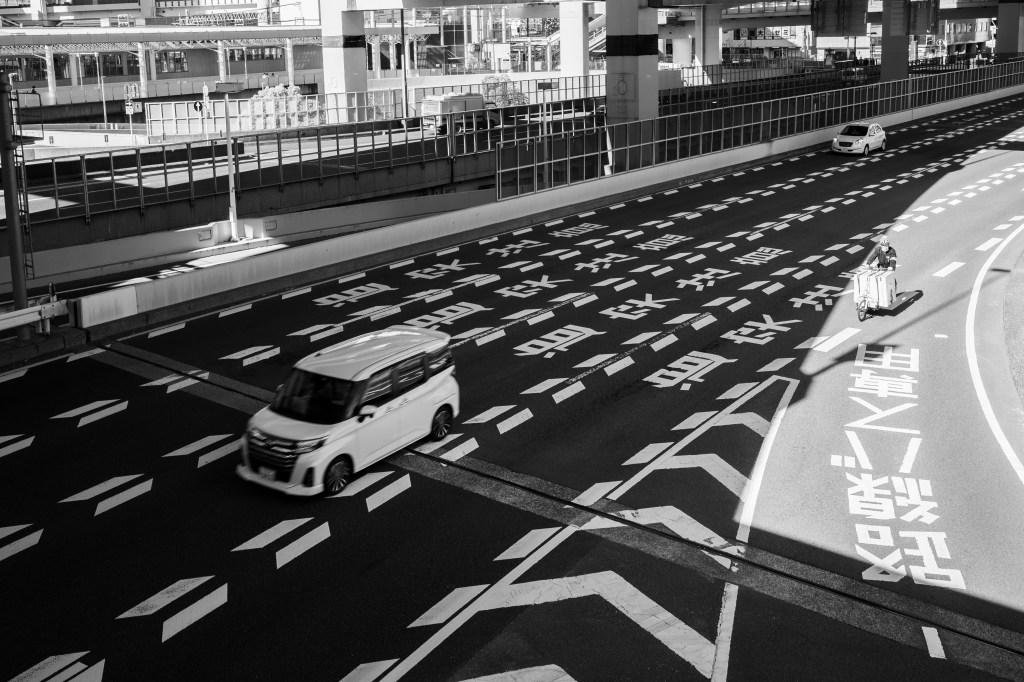
With no mechanical shutter, you can also see rolling shutter distortion quite easily when panning. So overall, this isn’t the best camera for shooting moving subjects.
In this context, it’s also worth noting that deleting an image requires four button presses, every single time. This is fine for occasional duff shots, but rapidly gets painful if you want to weed out all but the best frames from an extended burst.

I was generally quite happy with the camera’s evaluative metering, and never felt the need to switch to the spot mode instead. However, the camera can veer towards overexposure when the focus point is within a dark area of the frame. Much of the time you can see this is happening, and simply dial down the exposure to compensate. But that’s no help if it’s too bright to see the screen.
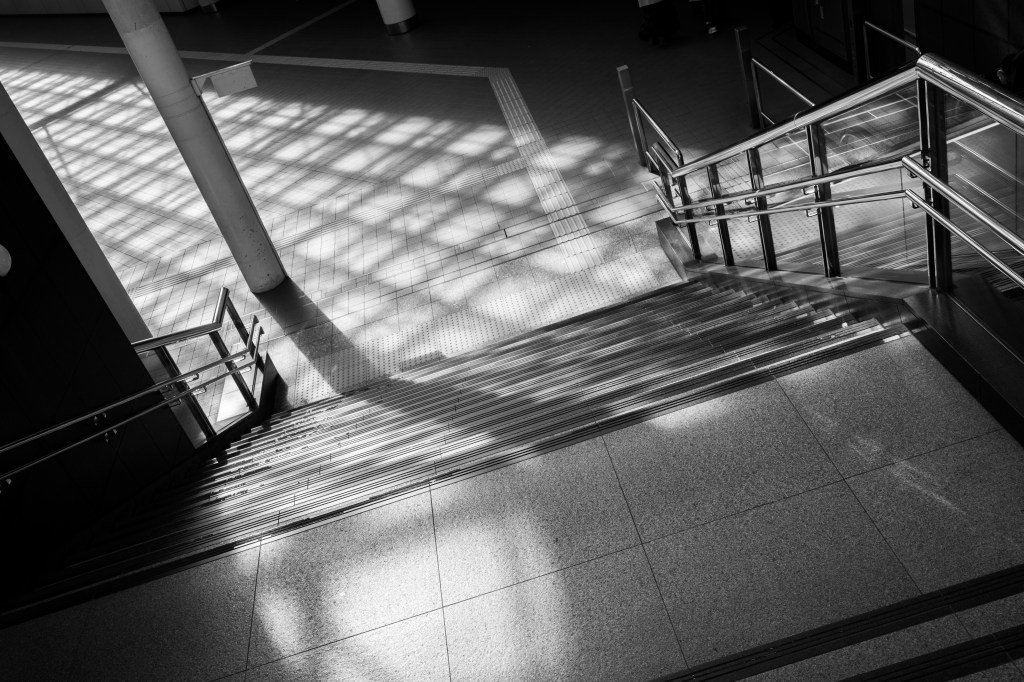
I found the Auto White Balance to be somewhat erratic, with the camera fully capable of making significantly different judgements when taking several frames of the same scene. So if you’re planning on using JPEGs, I’d recommend selecting a preset whenever possible. The camera barely appears to understand artificial light at all, and here it’s best to take a custom white balance.
As for Sigma’s in-camera colour modes, I suspect you’ll either love them or hate them. I find the Standard mode gives generally accurate-looking colours, while the new Rich option adds a bit of extra punch if you need it – although it can be a little overblown at times.
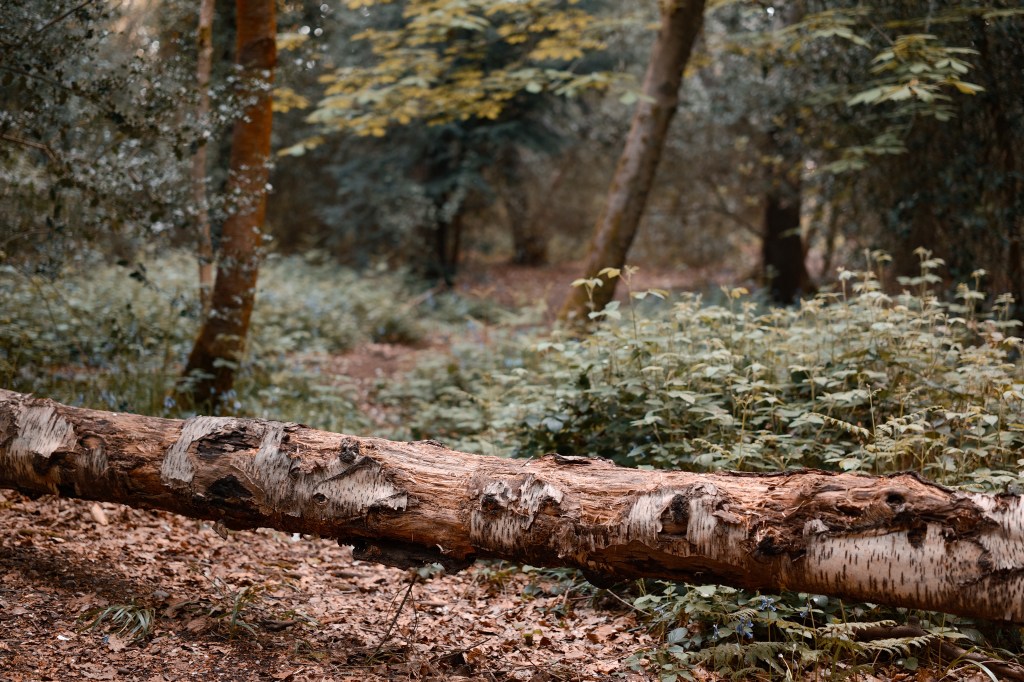
As for the more stylised options, they’re not especially my cup of tea, although Teal and Orange can give very nice results with the right subject.
The BF does, however, have a fabulous monochrome mode, with really attractive warm and cool tone options. In a neat touch, when you engage mono mode, colour filters replace white balance in the main settings. This allows you to emulate the effect of using a red, orange, yellow, green or blue lens filter, simply by spinning the dial.

Image quality
With its 24MP BSI-CMOS sensor, the Sigma BF delivers raw image quality that’s essentially in line with a wide range of other recent full-frame cameras, including the Nikon Zf and Z5II, Panasonic S5II and S9, and Leica SL3-S. This means it produces extremely clean images at low ISO settings, with plenty of scope for pulling up additional shadow detail without running into troublesome noise.

At the other end of the scale, it’s perfectly usable at sensitivities as high as ISO 12,800 or even ISO 25,600. In short, there are very few shooting situations where it won’t return decent images.
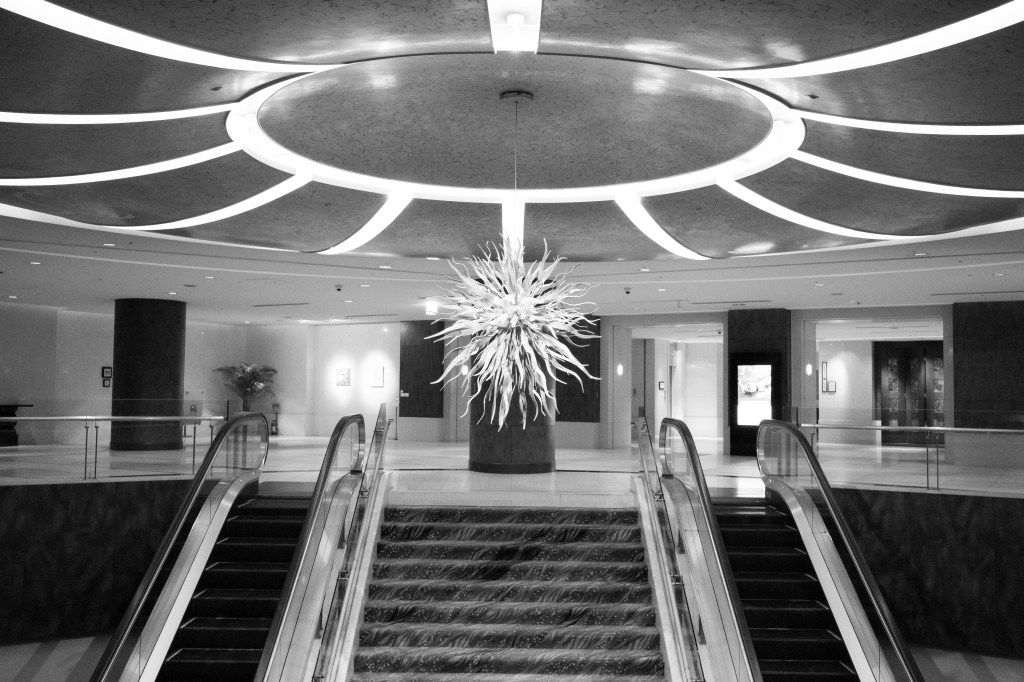
Sigma records raw files using the DNG format, which has the advantage that you probably won’t need to update your image processing software. But the flipside to this is that you don’t get support for camera colour profiles. I also find that DNG files often require just a little more work in post-processing to get my images looking how I want them.
One image quality problem that I did see quite frequently on the Sigma BF was colour moire. It was most visible when shooting cityscapes, giving some pretty spectacular blocks of false colour on finely repeating patterns such as railings and roofs. It’s more than I remember seeing on any other camera for quite some time, and suggests that the sensor has no optical low-pass filter.
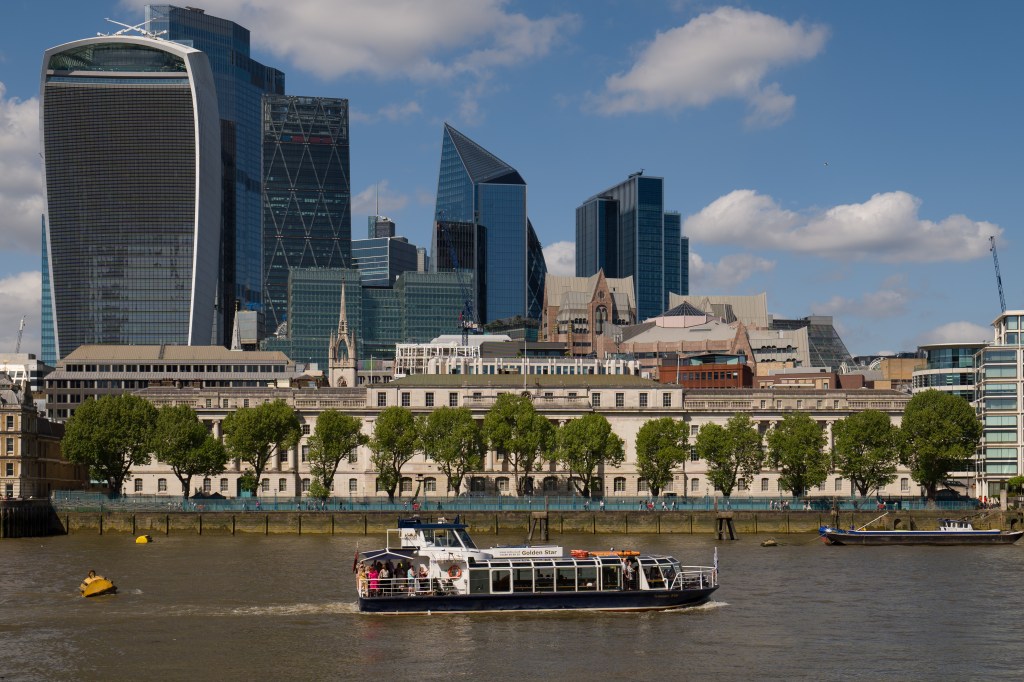
This is also one of the few cameras where I wouldn’t necessarily countenance using Auto ISO. Left to its own devices, the camera chooses ISO 400 by default, even in bright sunlight. This results in significantly increased noise in darker regions of the image, in turn reducing your ability to make tonal adjustments during raw processing.

On the other hand, when the light levels drop, the camera chooses a minimum shutter speed based on the 1/focal length rule – for example 1/50sec with a 50mm lens. Personally, I consider this too slow given the lack of any stabilisation, meaning that you can often get slight image blurring from camera shake. Thankfully, there’s an option to bias it towards using faster shutter speeds (or indeed slower ones).
Sigma BF: Our Verdict
When it comes to assessing the Sigma BF, there’s little point in comparing it to other similarly priced cameras. Rationally, if you want the best-featured and most capable 24MP full-frame mirrorless camera for less than $2000 / £2000, then you should buy something like the Nikon Z5II. But the BF isn’t designed for people who are looking for that. Instead, it’s a camera for those who appreciate its uniquely stylish design, and understand and accept – even embrace – its limitations.
This isn’t a camera for shooting sports, or wildlife, or airshows, or over-active kids. Instead, it’s best suited to slower, more contemplative photography, or for documenting such things as family activities and social events. It’s for people who don’t always feel the need to carry a big camera with a set of zooms for every situation, but instead are comfortable working with just a few small primes.
Personally, I enjoyed my time with the Sigma BF. I like its compact size, simplicity and ease of operation, and how it encourages you to engage with what it’s doing, rather than set everything to auto and fire away. It has a few annoying operational quirks, but hopefully Sigma can fix them with a firmware update. I also really enjoyed shooting with Sigma’s under-appreciated I-series primes, which complement the camera perfectly.
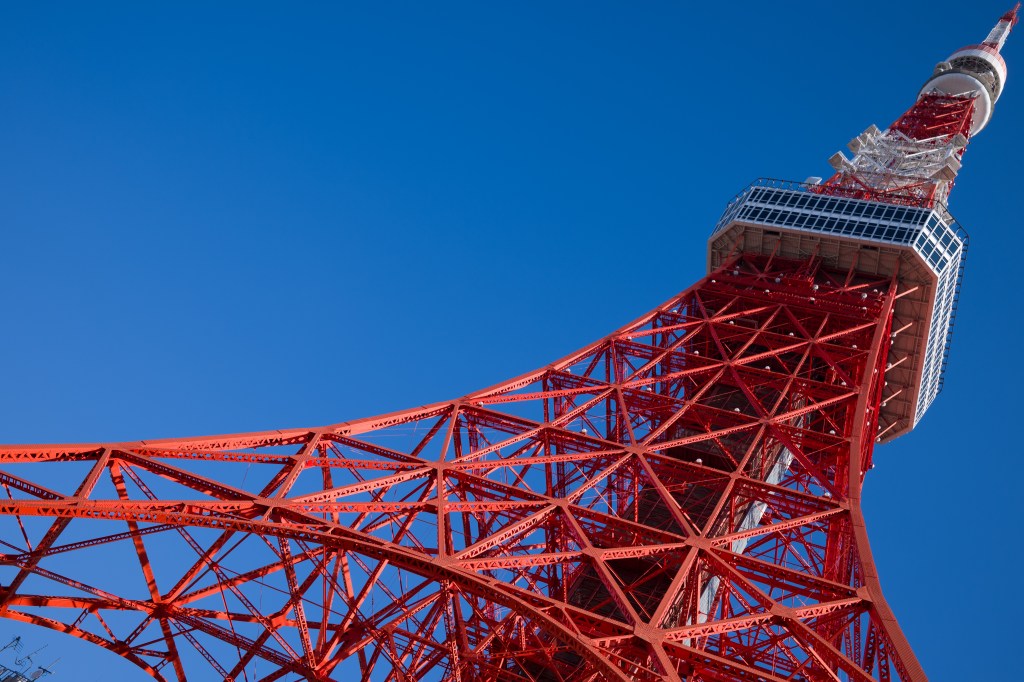
Clearly, the BF has its limitations, for example the lack of a mechanical shutter or in-body image stabilisation. But it turns out that a lot of the time, they don’t matter very much. Personally, though, I’d struggle to live with the lack of a viewfinder or tilting screen. But others might not mind so much.
Ultimately, photography is a creative pursuit. Sometimes it’s fine to buy and use things just because they are pleasing and inspirational – not necessarily because they are technically the ‘best’. The BF is precisely this kind of camera, and a refreshing change from over-complicated DSLR-shaped models. I’m glad that Sigma had the courage and imagination to build it.

Follow AP on Facebook, X, Instagram, YouTube and TikTok.
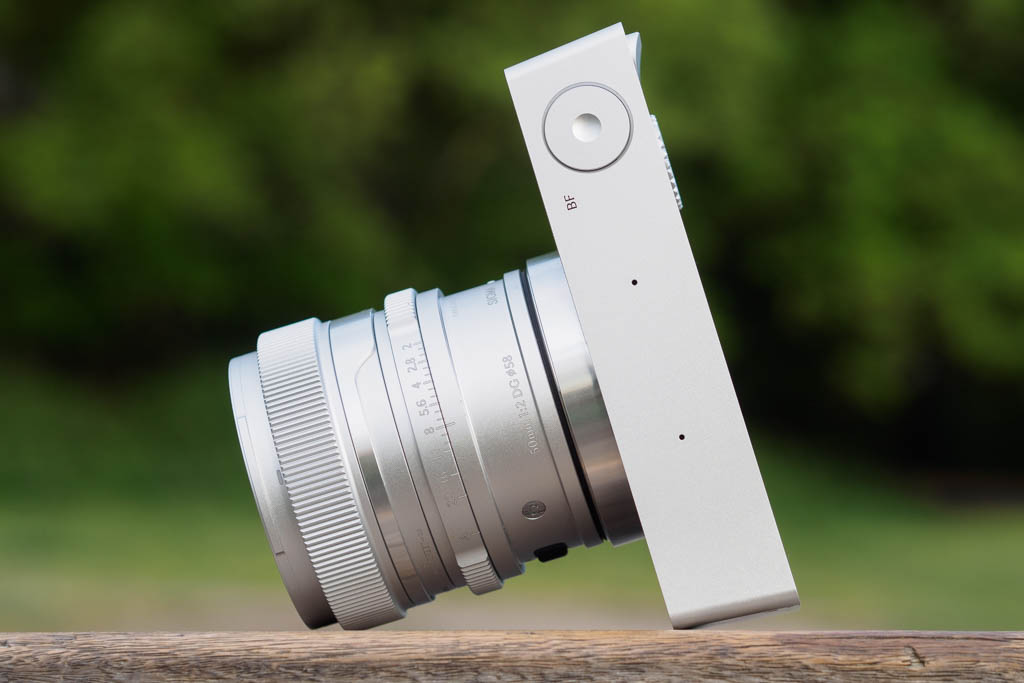
Sigma BF full specifications
| Sensor | 24MP BSI-CMOS, 35.9 x 23.9mm |
| Output size | 6016 x 4012 |
| Focal length mag | 1x |
| Lens mount | L-mount |
| Shutter speeds | 30 – 1/25,600sec, Bulb |
| Sensitivity | ISO 100-102,400 (standard), ISO 6, 12, 25, 50 (expanded) |
| Exposure modes | PASM |
| Metering | Evaluative, spot |
| Exposure comp | +/-5EV in 0.3EV steps |
| Continuous shooting | 3, 5, or 8fps |
| Screen | 3.15in, 2.1m-dot fixed touchscreen |
| Viewfinder | None |
| AF points | Freely positionable |
| Video | 6K 30fps, 4K 30fps, Full HD 120fps |
| External mic | None |
| Memory card | 230GB internal storage |
| Power | BP-81 Li-ion |
| Battery life | 260 frames / 60min video |
| Dimensions | 130.1 x 72.8 x 36.8 mm |
| Weight | 446g including battery |

